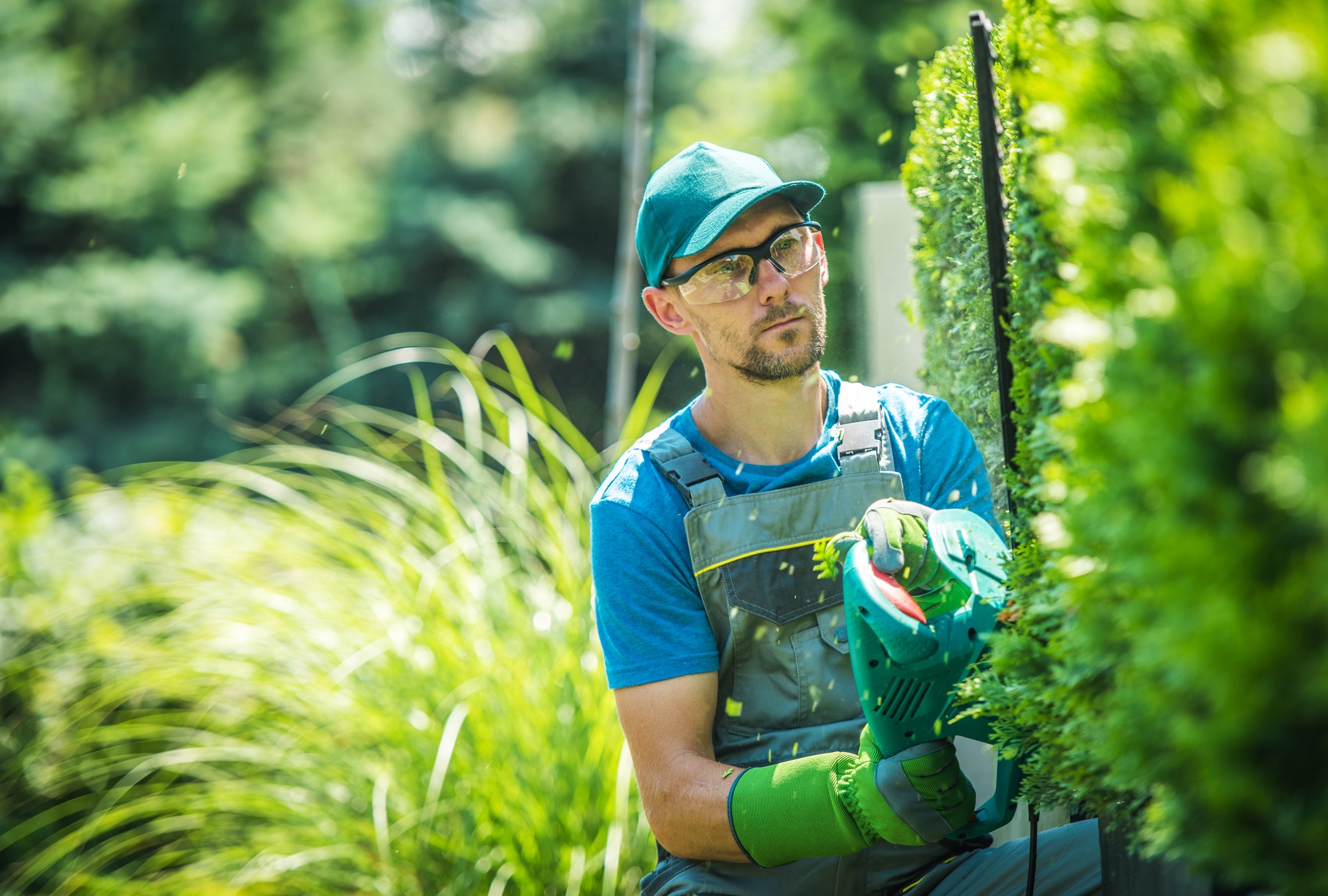How Hazardous Trees Affect Your Home and Property

Trees are a responsibility that require a little attention. If ignored, they can become a hazard to you and your family, your neighbors, and your entire community.
It can be difficult to decide to cut down a tree on your property. It may have been a gift from your father when you moved into the house 35 years ago. Or maybe it’s where you heard hours of laughter from your kids as they played on the tire swing hung from its branch.
But the reality is, trees can be a great hazard and keeping an eye on them can save possible loss of property, money, or even lives.
What is considered a hazardous tree?
According to the US Forest Service, to make a tree hazardous it has a structural defect that may cause it to fall – either the entire tree or its branches.
Structural defects can come from age, fire damage, disease, and a variety of other concerns.
A compromised tree has the potential to damage your property or a neighbor’s. Branches can fall and cause personal injury or even death. We will discuss some of the hazards in more detail below.
How can you spot a hazardous or dying tree?
Take inventory of the trees around your home and answer these questions:
- Are there dead branches, either still attached or stuck within the tree? These can become hazardous when a strong wind blows them down. Branches greater than 4 inches in diameter will cause the most damage.
- Are there any cracks in the trunk or visible decay from old wounds? If so, this is an indication of internal decay.
- Is there any damage to the main trunk? If the wound is more than 25% of the tree’s circumference, then it is recommended to remove the tree but consult an expert first.
- Is a tree leaning? Leaning trees should be removed even if they look healthy.
- Do you have branches in a large tree rubbing against each other or crossing? These should be removed to prevent any further damage to the tree.
- Do you see sprouts or small branches forming at the bottom of the tree? This is an indication that the tree is under severe stress. Fungus growing on a tree is a sign of internal rot. This does not include mushrooms growing under the tree – those are fine.
Before attempting to remove hazardous trees or branches, consult a local tree expert. Removing trees and branches from large trees also creates a hazardous situation.
What are the dangers of hazardous trees?
According to the National Storm Damage Center, dead trees cause over $1 billion in damages every year. With an increase in extreme storms, which is the cause of most damage, that number will only increase.
Injuries may come from branches or an entire tree falling. Since a hazardous tree’s wood is brittle, they are easily snapped during high winds.
Liability falls to the property owner if a passerby is injured by a falling branch.
Along with personal injury, dead trees can fall on utility lines, causing power outages for you and your neighborhood. Never remove branches or trees yourself when they are next to utilities.
Having a dead tree fall on your home or property can be quite expensive and has the possibility of causing injury or death to occupants. This could be your property or the neighbors.
If a tree will grow over 25 feet and is under a power line you will need to keep it thinned out so that it does not touch. Did you know that a wet power line can arc electricity as far as ten feet to reach wet tree foliage?
Trees hitting power lines can cut off power to your entire neighborhood. This would not make you very popular, especially in unpleasant weather.
What are the hazards of tree roots?
Hazards also lurk underground.
Tree roots can damage foundations and any external walls on your property. Roots cause subsidence, which is a ‘gradual caving in or sinking of an area of land.’ Subsidence can create unstable foundations and retaining walls around your property – or the neighbors.
Tree roots are searching for water, so all drains are a target. Just as a small plant can break through concrete, roots will get into pipes and cause leaks and blockages.
Sidewalks, maintained by your municipality, can be uplifted by roots, and create hazardous conditions for people in your neighborhood walking on those sidewalks. You may also be responsible for repairs, depending on your city ordinances.
Who decides if your tree is hazardous?
Of course, the homeowner can make the decision to remove a tree, but sometimes the request may come from a neighbor who is concerned about your tree causing damage to his property.
Some cities have ordinances against allowing hazardous trees to exist on private property. These cities can ask the homeowner to remove the hazardous tree or be subject to a fine.
In some cases, cities will remove the tree for the property owner. It would be good to check your city for any such ordinances.
It is your responsibility as the property owner to keep everyone safe and their property away from harm. If a tree has been determined to be hazardous and you refuse to remove it, or the parts that are deemed hazardous, you open yourself up to litigation.
Each state has different liabilities for damage caused by a tree on your property. This may include damage from encroaching branches, invading roots, trees growing over your property line, or causes a threat of falling.
It is advised to check the laws in your state as we cannot provide legal advice.
Who can remove hazardous trees?
If a neighbor’s tree limb is hanging into your yard you should be able to trim it back, with permission, but doing so without harming the tree. Since you could be liable for up to three times the actual cost of the tree, it would be wise to consult your local ordinances and a tree expert.
City workers may need to remove trees or branches if they interfere with any infrastructure – same with power companies.
Does homeowner insurance cover damage by hazardous trees?
When searching for home insurance or when reviewing your current policy, make sure you are covered for impacts of the trees surrounding your property. This could be tree root damage, subsistence, or damage from falling limbs.
Check your policy for subsidence coverage. Know that an insurer should never ask you to remove a tree without due cause. If they do advise you to remove a tree and you don’t want to, you can be liable for all costs of any future damage caused by that tree.
Best Practices
If you have been in your home for many years, do the suggested survey of the trees on your property as suggested above. If you are moving into a new property, consider the life of the trees and shrubs you are planting.
Plant trees and shrubs away from the foundation. Best to plant them at a distance that is equal to how tall they will grow at maturity.
Certain characteristics of trees are more prone to causing damage such as trees with the following:
- Weak wood that breaks easily (Willows)
- Frequent dropping of debris (Oak)
- Shallow roots (Red Maple)
- Known to be infested with disease or insects (Cottonwoods)
- Invasive qualities (Mimosa)
Species will vary by location. Do a search for trees in your area with the qualities listed or speak to a local tree expert.

